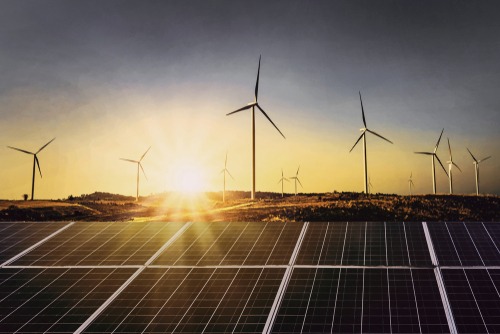Indiana Michigan Power files plan for 2,100 MW of solar, wind energy by 2028 with Michigan PSC

The Michigan Public Service Commission (MPSC), Indiana Michigan Power (I&M) filed the Powering the Next Tomorrow plan, laying out a path to add 2,100 MW of wind and solar energy generation by 2028.
“Our Powering the Next Tomorrow plan is a major step in I&M’s strategic, responsible transition to more clean-energy sources while meeting our customers’ needs for safe, reliable energy long into the future,” Steve Baker, president and COO of I&M, said. “This new generation will combine with I&M’s existing resources to provide a diversified and flexible generation portfolio that will stabilize energy costs over time, stimulate economic growth, reduce emissions and take advantage of new technologies.”
This would coincide with and make up for the scheduled retirement of I&M’s coal-fueled Rockport Plant by the end of 2028. It will also put the company more in line with the Michigan Healthy Climate Plan and its own parent company, AEP, which has set a net-zero emissions goal for 2050. If the full amount of renewable generation is approved, that would be enough to power the equivalent of 400,000 homes with clean energy.
All of this also factors into the company’s larger Integrated Resource Plan (IRP), an in-flux creation, but one that addresses its general analysis of future energy needs and the path to address them over 20 years. In the near term, I&M also plans to issue a request for proposal (RFP) for approximately 800 MW of wind generation and approximately 500 MW of solar generation, with half needed by 2025 and half by 2026. A second RFP will complete its 2028 goal, with about 800 MW of solar, 60 MW of battery storage, and 1,000 MW from gas peaking units.
I&M noted that the new resources would more than quadruple its current solar and wind generation. While not as green as most of these pushes, even the peaking units would provide advantages over former coal usage by being more cost-effective. Further, they would only generate power during periods of high energy use and also, potentially, utilize hydrogen as a fuel source to improve their environmental performance.
In addition to this update with the MPSC, I&M previously filed its IRP with the Indiana Utility Regulatory Commission.
